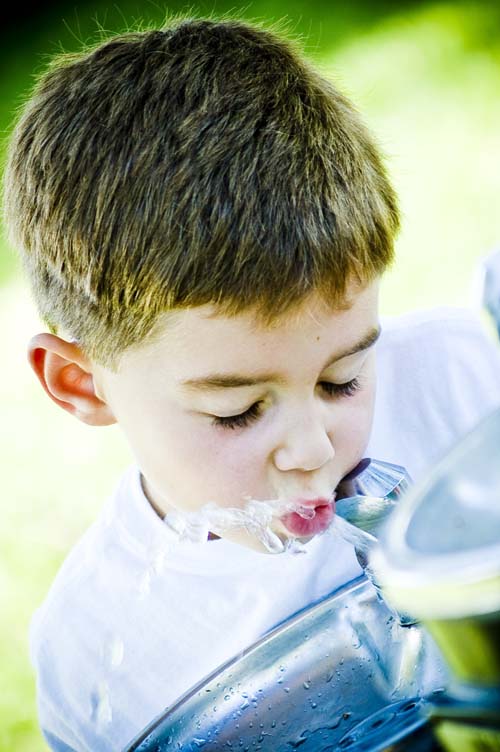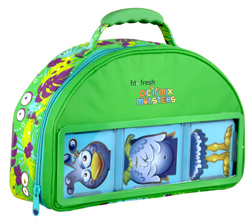 The American Academy of Pediatrics has released some new advice regarding your kids and their consumption of sports and energy drinks. Since these drinks are the #3 source of calories in the diet of most kids, this advice comes at a good time. Many children reach for these beverages at meal and snack time when they should be drinking milk or water. There is also confusion between the two types of drinks. Many children chose an energy drink after exercising when what most of them need after regular exercise is water. In situations where they may actually need a sports drink, many children chose the energy drink instead.
The American Academy of Pediatrics has released some new advice regarding your kids and their consumption of sports and energy drinks. Since these drinks are the #3 source of calories in the diet of most kids, this advice comes at a good time. Many children reach for these beverages at meal and snack time when they should be drinking milk or water. There is also confusion between the two types of drinks. Many children chose an energy drink after exercising when what most of them need after regular exercise is water. In situations where they may actually need a sports drink, many children chose the energy drink instead.
During regular exercise, most kids will do well with just plain water. There is no reason to hydrate them with a sports drink that has added sugars, because the extra calories can contribute to tooth decay and obesity. In the rare instance when it is very hot and your child has been sweating profusely or they have been exercising vigorously for a prolonged period of time, a sports drink can be useful because it replaces the salts (electrolytes) that are lost during these times.
Energy drinks, however, are a different story, since they most often have some sort of stimulant in them, most often caffeine, and quite a bit of sugar. Other stimulants that they may contain are guarana (an herbal stimulant), ginseng, and taurine, among others. There is no place in a child’s diet for stimulants as they have been linked to harmful health effects on children’s developing neurologic and cardiovascular systems. Kids will have enough energy when they follow healthy habits (eating right and getting enough sleep).
If your child doesn’t think that they are consuming too much caffeine then do the math, or better yet have them go a day or two without caffeine. If they feel horrible, then they were drinking enough to develop a dependency, if not an addiction. The following are the average amounts of caffeine found in a can of cola (29 mg); an 8 oz cup of coffee (95mg); and for every 8 oz of energy drinks (75-80 mg but it can range from 50 to 145mg per 8 oz). These are just typical values so beware and read the nutrition facts label because some cans or bottles of beverages marketed as “energy drinks” can contain up to 500 mg of caffeine and for several brands the amount is not listed on the label, which can be very dangerous.
Dr Debs’s bottom line: Avoid energy drinks as there is no place for caffeine and other stimulants in a child’s diet because they can be harmful. Save sports drinks for when those beverages may actually be needed such as during and after intense exercise. There are no short cuts in life and artificially gaining a “buzz” or “boost” from stimulants (caffeine) will not promote health in either you or your child. Since kids take the lead from their parents, avoid drinking these beverages yourself. Try going cold turkey together! Give kids water most of the time! If they need energy give them a piece of fruit or a glass of milk.



 Dr. Debbie Kennedy (Dr. Deb) is a pediatric nutritionist with 23 years of experience in the field. She has worked with both Yale and Columbia Universities, and has developed programs for some of the industry’s luminaries such as Dr. David Katz and Dr. Mehmet Oz.
Dr. Debbie Kennedy (Dr. Deb) is a pediatric nutritionist with 23 years of experience in the field. She has worked with both Yale and Columbia Universities, and has developed programs for some of the industry’s luminaries such as Dr. David Katz and Dr. Mehmet Oz. 


Loved the article on energy drinks–thank you so much!. As a pediatric cardiologist, i often see kids for palpitiations or dizzinesss which are typically related to either the stimulant in caffieine or its diuretic property. I do have a question for you–how do you encourage parents not do th coffee bar drive thru for their pre-teens lattte or frappe? These drinks can have lots of calories as well as too much caffiene. The early exposure to caffeine is not a ‘good lesson’ for our kids. thanks for the feedback! Vickie